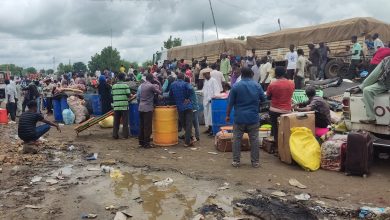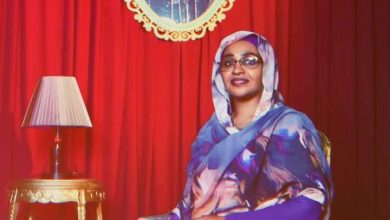Memory of Sudanese theatre Theater, Radio and TV

By Al Sir Al Sayed
: The art of theater has been distinguished from the dawn of its history until now by the fact that it has always been able to have techniques that enable it to “compromise” in order to adapt, reproduce, or modify literary texts, texts of radio, TV, cinema, theater itself, and even performing arts such as dancing, singing, and music, and transforming them into a theatrical performance. Or integrating it into his contexts. Therefore, and perhaps because of this characteristic, he was called the father of the arts.
In this article, I will stop, without detailing, at the experience of Sudanese theater in activating these techniques, leading to what I might call “dramatic treatments” of non-theatrical texts and transforming them into theatrical texts, and because they are so numerous, I will suffice with citing some examples.
After that, it is up to critics and researchers to explore the depths of this experience. .
In radio drama, for example, we find famous plays such as “Al-Manadhara” by Hamdnallah Abdel Qader, “Al-Dahbaya” by Ali Al-Badawi Al-Mubarak, “A Story Under the Hot Sun” by Salah Hassan Ahmed, and “Wadi Amsdir” by Mohamed Khojali Mustafa. They were originally series presented by Radio Omdurman, and in drama. On TV , we find the play “Corner Kiosk” by Hamdnallah Abdel Qader, which was originally a play presented on TV.
As for the field of literature, such as poetry, we find many poems that were turned into theatrical performances, including “The Torrent” and “Masdar Abu al-Surrah Liyanki” by the poet Al-Qaddal, and “Concerning the Sea” by the poet Osman .
Bushra, and in the short story we will find the story “The Ant-Man” by Youssef Idris, which Professor Saad Youssef turned into a theatrical text, which is “The Story of the Ant-Man,” and the story “The Chain is Hurn” by Abdullah Ali Ibrahim, which he himself turned into a theatrical text, which is “Hot, Dry, Sprawling.” As for Regarding the novel, I will suffice with mentioning the novel Dhawal al-Bayt, which the poet Mohamed Mohi al-Din turned into the play “Dhawal al-Bayt.”
In the field of folk tales, legends, and oral or written history, and given the theater’s work in these sources, we will focus, but not limited to, on the plays “The Death of Taghuj and the Mahalaq,” “The Destruction of Soba” by Khaled Abu Al-Rous, “Nabta Habibti” by Hashem Siddiq, and “The Tragedy of Yarol” by Al-Khatim Abdullah and “A statement by a farmer from Gouda” by Professor Abdullah Ali Ibrahim.
So we can say that the Sudanese theater, like other theaters in the world, worked on literary and artistic texts and on dramatic works that had previously been presented through other media, and on stories, legends, written and oral histories, and with its breadth and flexibility of techniques, it was able to transform them into theatrical performances that people saw and testified to its uniqueness. Who among us has not been captivated by the play of Al-Dhabaya or The Yarol Tragedy play or the Wadi Al-Masdar play.



